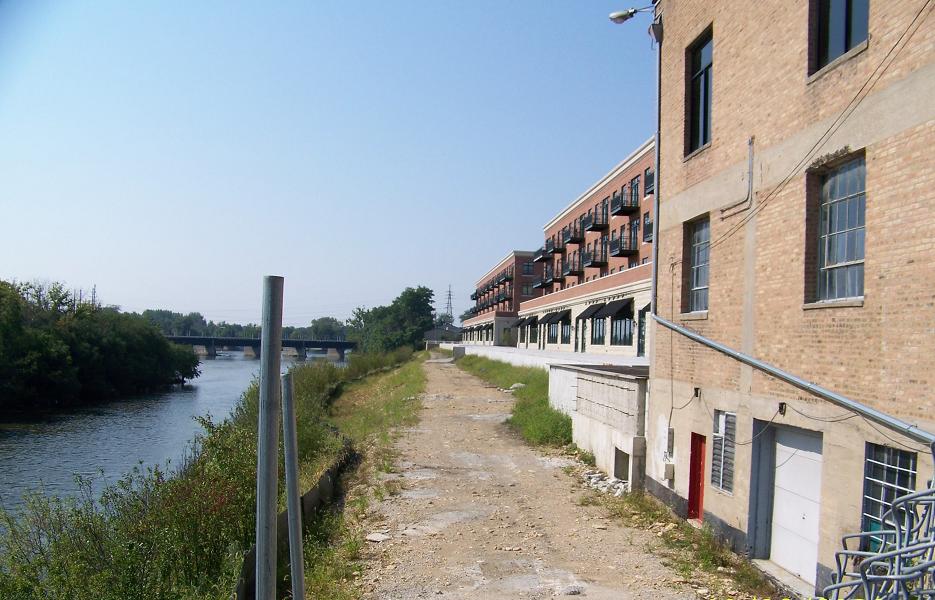First of four
A “weed patch” in a Grayslake backyard. The meandering banks of the Kankakee River. Trees along the fence of my Chicago alley. The foraging territory of an endangered pair of Swainson’s Hawks in Kane County. The shore of Lake Michigan from Wisconsin to Michigan, from Milwaukee to Benton Harbor.
Welcome to the fabric of Nature in which we live.
Of course, all of this was here, in one form or another, long before humans arrived. Over the past two hundred years or so, we’ve generally taken this fabric for granted as we’ve farmed the landscape, built streets and factories, used the waterways for transportation and sewage, and clogged the air with smoke and exhaust fumes.
That began to change in the 1970s with the growth of the environmental movement, and, in recent years, global warming has raised awareness significantly.
“A different language”
Today, conservationists and urban planners have looked at our local fabric of Nature and given it a new name --- the green infrastructure.

“If we’re going to engage a larger group of people in conserving land and preserving land, we have to talk a different language,” says Steve Barg, the executive director of Liberty Prairie Conservancy, a non-profit group working to preserve open space and restore natural areas in Lake County, Ill.
Words have power. “Green infrastructure” is being used more today because it implies two things.
One is that --- like the “gray” infrastructure of roads, sewers, water mains, sidewalks, railroad lines, alleys and utility lines --- Nature provides economic benefits. It works. It labors. For us.
When a meadow in Orland Park sops up a rainfall, that water doesn’t have to be transported by a storm sewer to a treatment plant for cleaning. The cost of cooling Chicago’s City Hall on an August afternoon is much less because the garden (left) on the city’s half of the roof keeps the surface temperature there as low as 91 degrees, in contrast to the temperature of 169 degrees on the un-gardened County Building half.
So Nature isn’t just beautiful. And we can save money if we help it thrive.
Another reason for using the term “green infrastructure” is that --- again like its “gray” cousin --- Nature isn’t something that can exist well or work very well in isolation. It needs to be inter-connected.
Preserving an acre of trees is fine as far as it goes, but a stand of twenty acres of woods not only handles more rainfall and cleans the air better, but also provides a place where a wider variety of plants and animals can live. It doesn’t do much to improve the quality of the water in one mile of a river if the rest of the river continues to be polluted.
“What happens on my landscape affects what happens on your landscape,” says Melinda Pruett-Jones, executive director of Chicago Wilderness, an alliance of conservation organizations throughout the metropolitan region promoting the benefits of biodiversity.
Natural areas and natural techniques
“Green infrastructure” is not terribly specific as a term. (Indeed, although he uses the phrase, Barg prefers “land health,” arguing, “Healthy land and healthy water lead to healthy people.”)
.jpg) Chicago Wilderness defines the green infrastructure as “the mosaic of natural areas in the [metropolitan] region, including woodlands, savannas, prairies, wetlands, lakes, and streams…[that] help clean our air and water, control flooding, and offer opportunities for outdoor recreation, exploration, and respite.”
Chicago Wilderness defines the green infrastructure as “the mosaic of natural areas in the [metropolitan] region, including woodlands, savannas, prairies, wetlands, lakes, and streams…[that] help clean our air and water, control flooding, and offer opportunities for outdoor recreation, exploration, and respite.”
But it’s more than this mosaic. It’s a way of thinking, a way of being. A way of life.
Openlands, a non-profit group aimed at protecting natural areas and open spaces in the Chicago region, says, “Green infrastructure is also a set of techniques and practices that help reduce the amount of stormwater that runs off a site. Green infrastructure includes such things as native landscaping, green roofs, tree plantings, rain gardens and permeable pavements.”
At the most micro level, every resident of the region can play a role in strengthening the green infrastructure, according to Chicago Wilderness --- “by promoting nature in backyards through the use of native landscaping, rain gardens and rail barrels, and by promoting the greening of schoolyards and other community open space.”
“Social costs”
The value of fostering and nurturing the fabric of woods, prairies and other natural areas can be economic and esthetic. In addition, though, there’s a quality of life aspect to this.
Just being around trees, for instance, helps us feel better psychologically. “Exposure to trees has been shown to reduce stress, rates of violence and symptoms of children with Attention Deficit Disorder, while increasing feelings of belonging and hospital patients’ recovery rates,” notes a recent environmental report by the City of Chicago.
“We’ve done a lot to remove ourselves from Nature and open space and green and the soft parts of our environment,” says Adam Durnbaugh, a deputy commissioner in Chicago’s Environment Department. “There are social costs to that.”
So, those pushing the idea of the green infrastructure are also pushing the idea of human beings weaving ourselves more into the fabric of Nature in which we live.
As Durnbaugh’s boss, Suzanne Malec-McKenna, Chicago’s Environment Commissioner, says, “The primary thing about the green infrastructure is it’s the true network of life.”
Next: “The next step in Burnham’s vision”
For a print-friendly version of this post, go here.
Blog Categories
- art (14)
- civic engagement (17)
- culture (16)
- future (26)
- green legacy (15)
- history (26)
- pavilions (4)
- schools (8)
- transportation (7)
